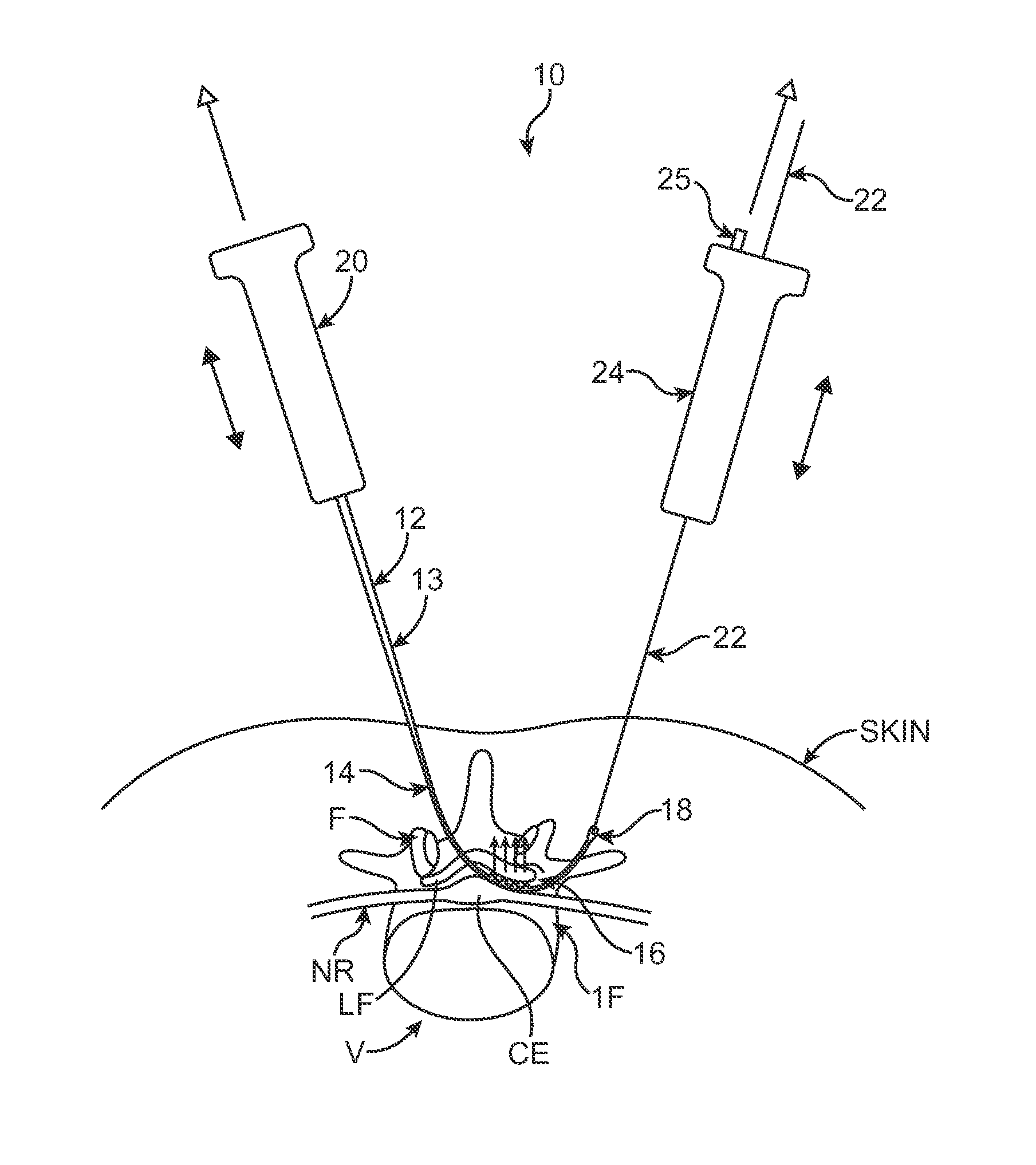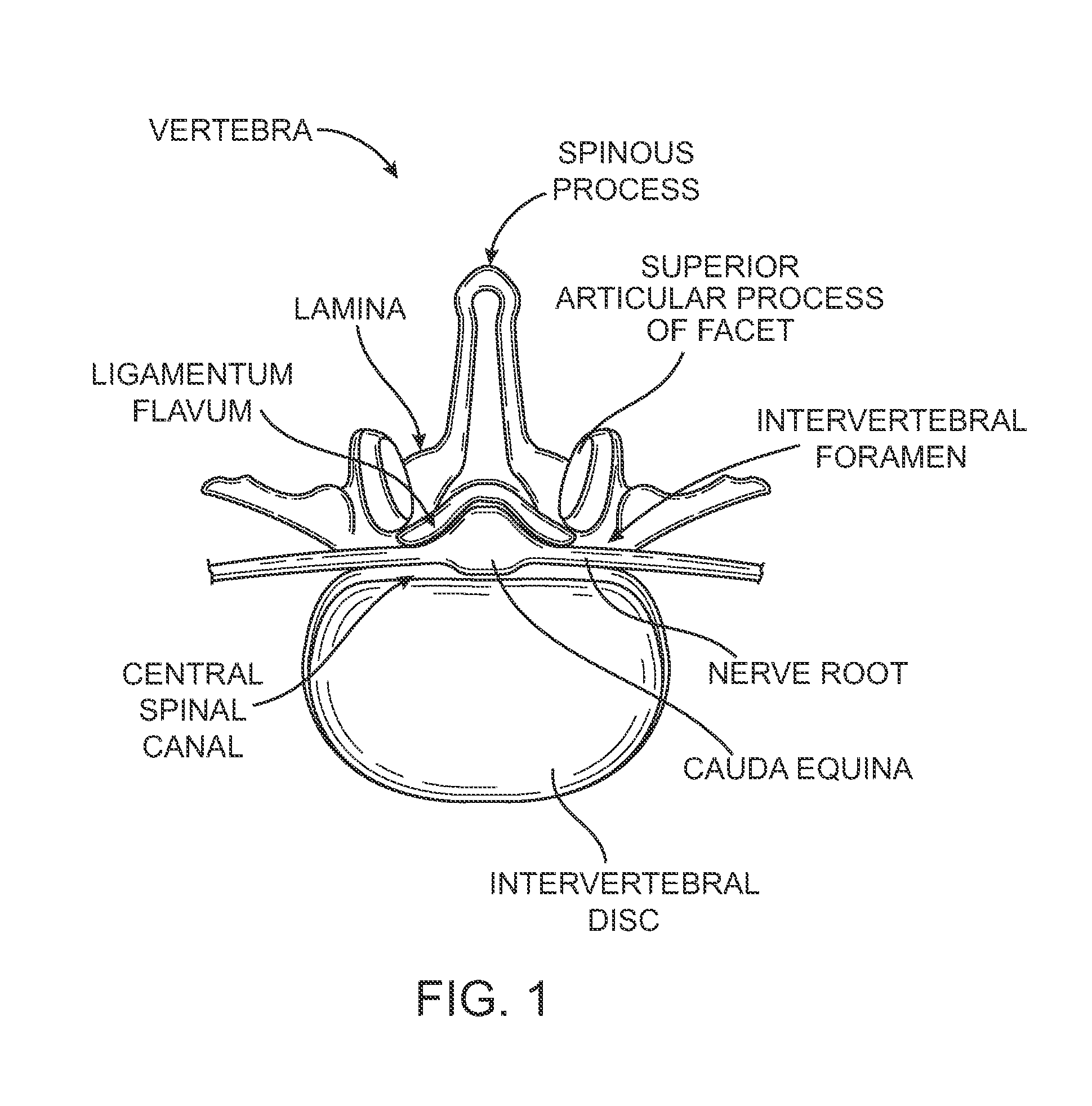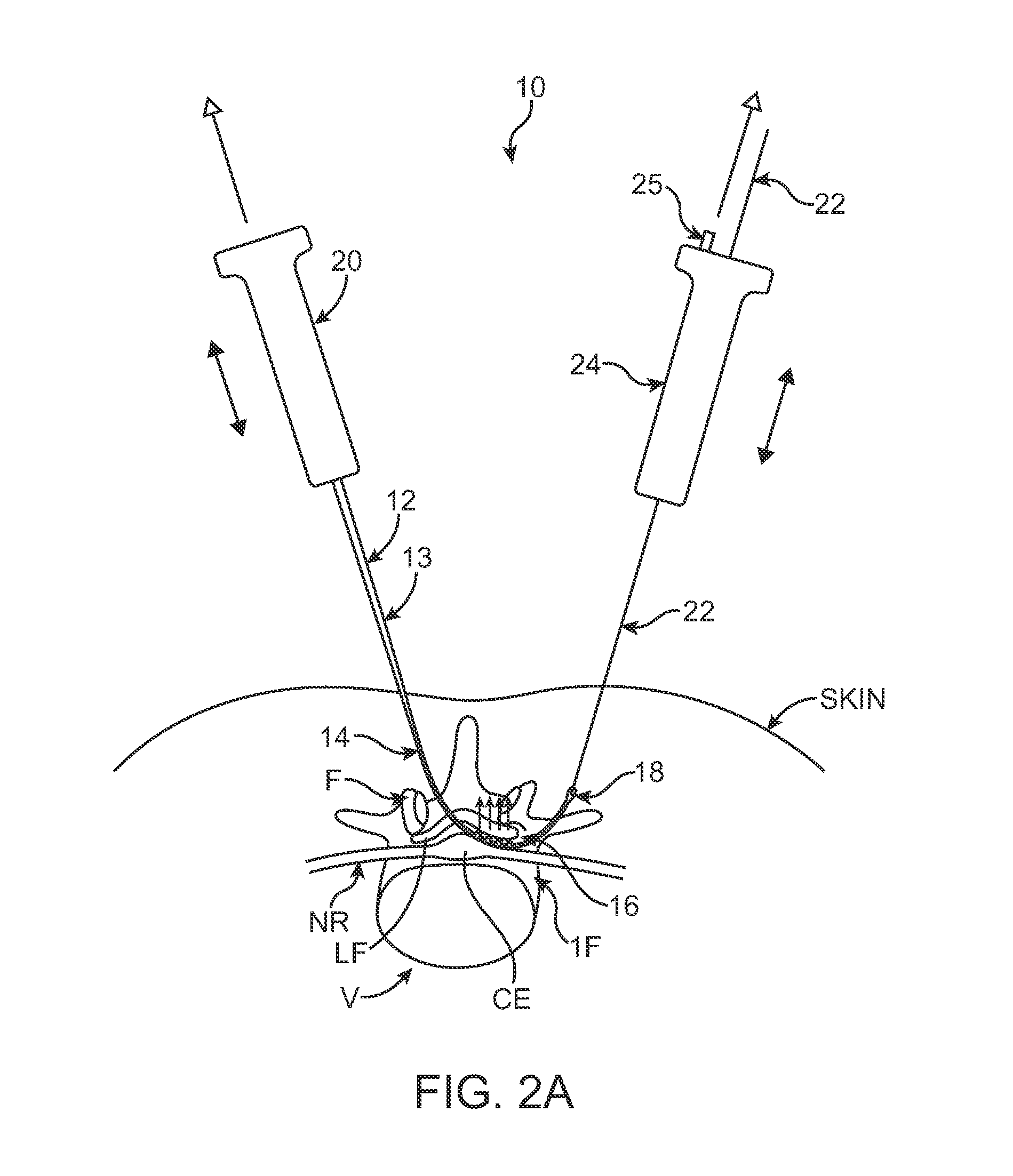Methods, systems and devices for carpal tunnel release
a carpal tunnel and carpal tunnel technology, applied in the field of carpal tunnel release systems, devices and methods, can solve the problems of difficult to modify certain tissues to achieve a desired effect, more technically challenging procedures, and reduced or even no direct visualization
- Summary
- Abstract
- Description
- Claims
- Application Information
AI Technical Summary
Benefits of technology
Problems solved by technology
Method used
Image
Examples
Embodiment Construction
[0128]Various embodiments of tissue modification devices and systems, as well as methods for making and using same, are provided. Although much of the following description and accompanying drawing figures generally focuses on surgical procedures in spine, in alternative embodiments, devices, systems and methods of the present invention may be used in any of a number of other anatomical locations in a patient's body. For example, in some embodiments, flexible tissue modification devices of the present invention may be used in minimally invasive procedures in the shoulder, elbow, wrist, hand, hip, knee, foot, ankle, other joints, or other anatomical locations in the body. Similarly, although some embodiments may be used to remove or otherwise modify ligamentum flavum and / or bone in a spine to treat spinal stenosis, in alternative embodiments, any of a number of other tissues may be modified to treat any of a number of other conditions. For example, in various embodiments, treated tis...
PUM
 Login to View More
Login to View More Abstract
Description
Claims
Application Information
 Login to View More
Login to View More - R&D
- Intellectual Property
- Life Sciences
- Materials
- Tech Scout
- Unparalleled Data Quality
- Higher Quality Content
- 60% Fewer Hallucinations
Browse by: Latest US Patents, China's latest patents, Technical Efficacy Thesaurus, Application Domain, Technology Topic, Popular Technical Reports.
© 2025 PatSnap. All rights reserved.Legal|Privacy policy|Modern Slavery Act Transparency Statement|Sitemap|About US| Contact US: help@patsnap.com



